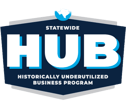Rpharmy has been on the road again, connecting with pharmacy professionals and healthcare leaders at events across the country, including the 2025 ONS Congress. We always love the opportunity to meet with our valued customers and those just getting to know us.
At ONS, we had truly insightful conversations with oncology nurses about their hazardous drug safety programs. One recurring theme? Communication gaps. Many nurses shared that their facilities still struggle to clearly communicate safety protocols related to hazardous drug handling.
This got us thinking: “Does the pharmacy’s obligation stop at the door?”
In other words, once the safety protocols are determined and documented, is it up to the nurses and other healthcare workers to access and follow them?
We say: Absolutely not. And USP <800> agrees.

When Communication Fails, Nurses Pay the Price
In fact, in one ONS Congress conversation, one group of nurses told us that their health system was cited at every facility during a Joint Commission inspection.
Why? Pharmacy had provided the safety information—but nurses weren’t accessing it because it was buried in a “wall of text.” The format wasn’t usable. The result: nursing staff didn’t feel confident they were protected from exposure.
When we showed them Rhazdrugs, one nurse grabbed a brochure (featured below) and said,
“Thank you for caring for us. Thank you for creating this.”
Of course, that hit me right in the feels. Nurses are truly the best people, taking care of us in our most vulnerable moments, which is one reason why we are so passionate about protecting them from exposure to hazardous drugs.

Less Text, More Graphics = User Friendly
We heard it again and again: “The safety info is there, but it’s not user-friendly.”
Some healthcare facilities still rely on their trusted (but massive) spreadsheet. You know what I’m talking about.
A spreadsheet or even Word document requires healthcare workers and especially busy nurses to step outside of their workflow within the MAR or EHR to locate the spreadsheet (on the intranet most likely) and then scroll through the “wall of text” as many put it to find the safety information they needed when caring for a cancer patient.
Other facilities use Epic’s hazardous drug flag to alert nurses about hazardous drugs and communicate safety protocols. Again, we heard the term “wall of text.”

We loved showing nurses how Rhazdrugs simplifies the experience:
- Clear, scannable visuals
- Easy-to-understand PPE and disposal guidance
- All available from the MAR

Wait, what? That drug is hazardous?
One final conversation really shocked me. Several young nurses stopped by the Rpharmy booth, and I asked them what they thought the most viewed hazardous drug was within Rhazdrugs. They guessed several chemotherapy drugs, but drumroll… the most viewed hazardous drug is: spironolactone.
What’s your reaction?
They were shocked and even more so because they didn’t even know it was hazardous. They wondered if their pharmacy was aware that spironolactone was hazardous. Of course, pharmacy does (I asked this same question to a room of pharmacists the same week to confirm)—but the fact that frontline nurses didn’t shows how wide the communication gap can be.
Nurses Belong in the Room Where It Happens
We left ONS more fired up than ever about our mission: to care for the caregivers. Frontline staff should never have to risk exposure because the information they need is hard to find.
Hazardous drug safety only works when nurses have a voice in how protocols are communicated and used. We’re here to help make that happens.
Want to learn more about Rhazdrugs or share how your facility is tackling hazardous drug communication?
📧 Email us at info@rpharmy.com—we’d love to hear from you.

